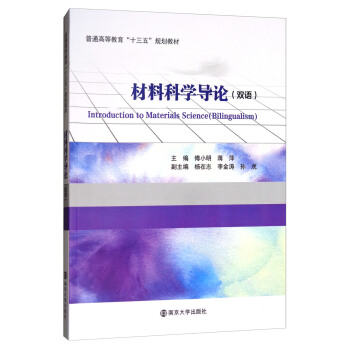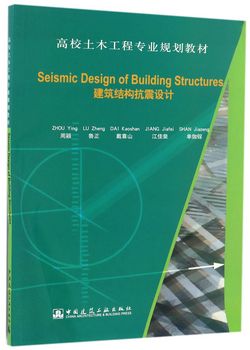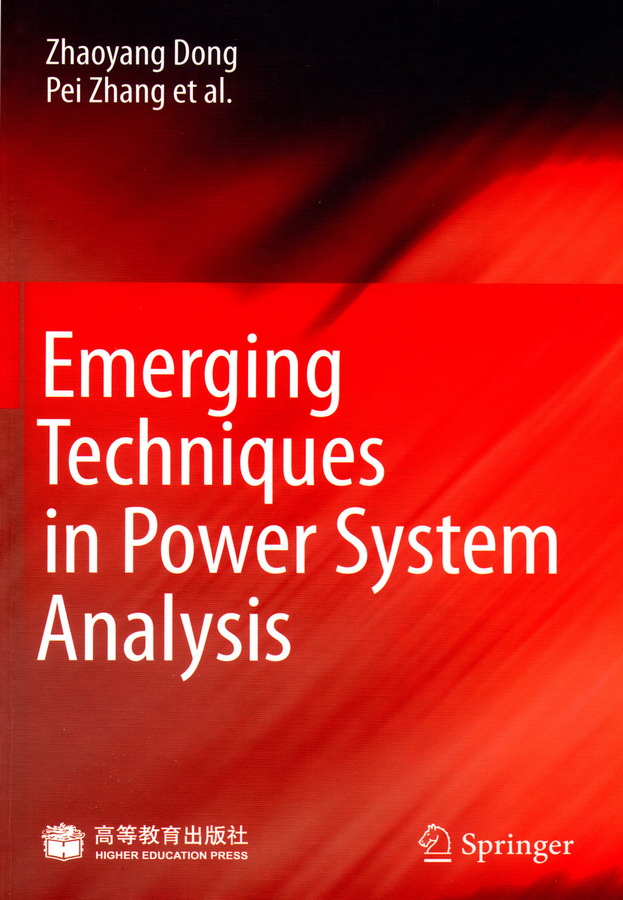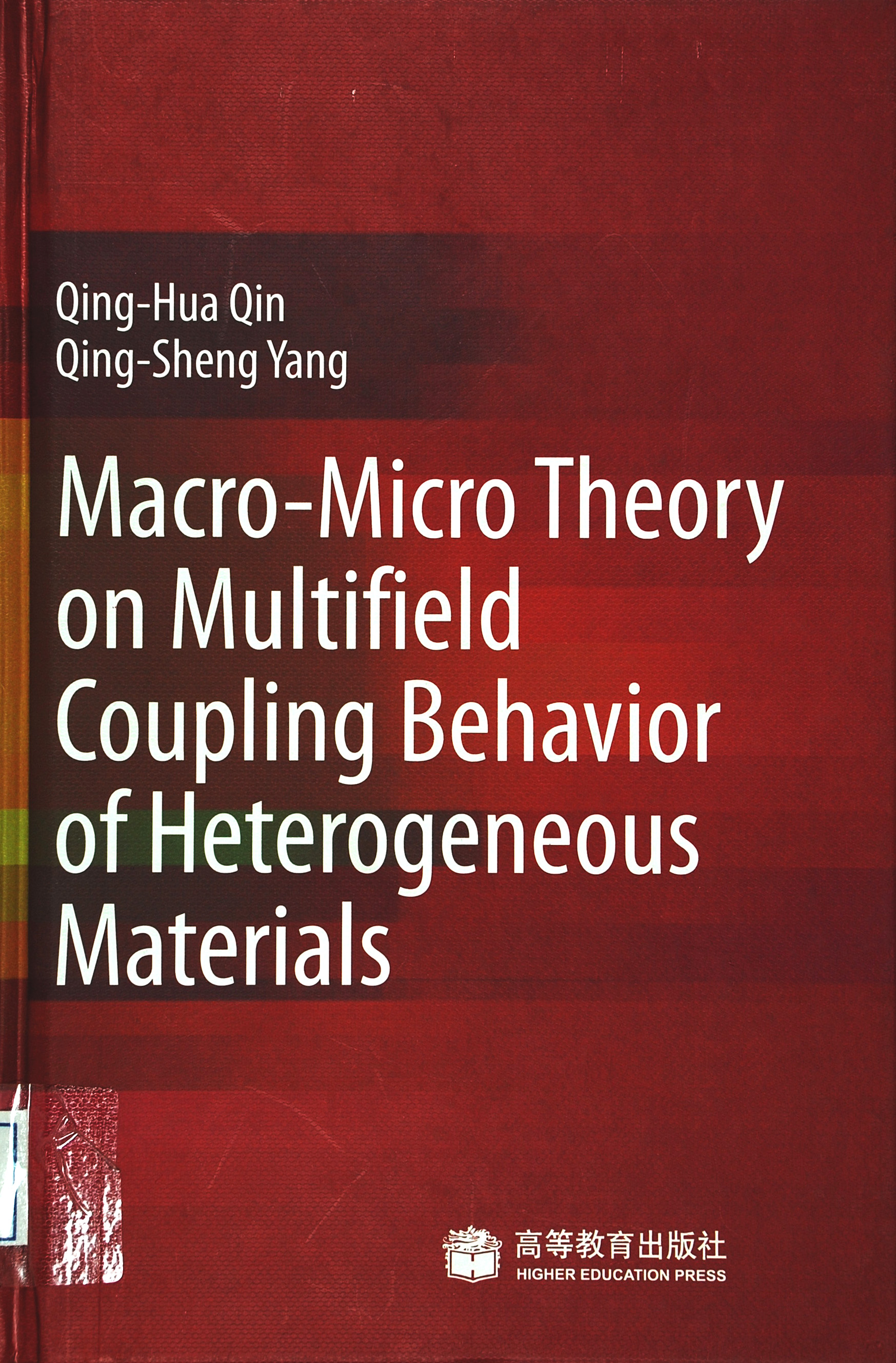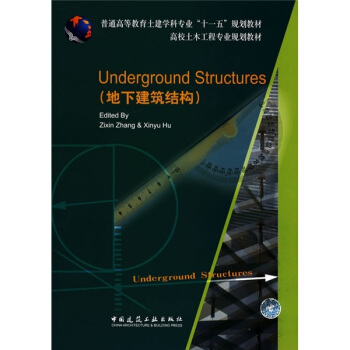材料科学导论(双语版)
定价:¥48.00
作者: 傅小明 蒋萍
出版时间:2018-02
出版社:南京大学出版社
- 南京大学出版社
- 9787305193620
- 1
- 234779
- 16开
- 2018-02
- 417
- 252
- TB3
内容简介
《材料科学导论(双语)/普通高等教育“十三五”规划教材》内容全面、图文并茂、深度适宜,兼顾系统性和实用性,突出知识点和技术点的关系,系统性地介绍了材料科学的基础知识,形成了基本的知识架构,作为学生的基础课教材使用,符合复合型和应用型人才培养目标和学生的特点。
目录
Chapter 1 Introduction
1.1 Historical Perspective
1.2 Materials
1.3 Classification of Materials
1.3.1 Metals
1.3.2 Ceramics
1.3.3 Polymers
1.3.4 Composites
1.3.5 Advanced Materials
1.3.5.1 Semiconductors
1.3.5.2 Biomaterials
1.3.5.3 Smart Materials
1.3.5.4 Nanoengineered Materials
1.4 Structural Characteristic of Materials
1.4.1 Crystal Lattice
1.4.2 Crystallographic Indices
1.4.3 Anisotropy
1.5 Materials Properties
1.5.1 Physical and Chemical Properties of Materials
1.5.2 Mechanical Properties of Materials
1.6 Materials Science
1.7 Modern Materials' Needs
Part I Foundation of Phase Change of Materials
Chapter 2 Phase Diagrams
2.1 Introduction
2.2 Definitions and Basic Concepts
2.3 Solubility Limit
2.4 Phases
2.5 Phase Equilibrium
2.6 Equilibrium Phase Diagrams
2.7 Interpretation of Phase Diagrams
2.7.1 Phases Present
2.7.2 Determination of Phase Compositions
2.7.3 Determination of Phase Amounts
2.7.4 Binary Eutectic Systems
2.7.5 Gibbs Phase Rule
2.7.6 Iron-Iron Carbide Phase Diagram
Chapter 3 Solidification and Crystallization
3.1 Introduction
3.2 Solidification of Metals
3.2.1 Formation of Stable Nuclei in Liquid Metals
3.2.2 Homogeneous Nucleation
3.2.3 Critical Radius and Undercooling
3.2.4 Heterogeneous Nucleation
3.3 Growth of Crystals
3.3.1 Growth of Crystals in Liquid Metal and Formation of a Grain Structure
3.3.2 Solidification of Single Crystals
3.3.3 Metallic Solid Solutions
3.3.3.1 Substitutional Solid Solutions
3.3.3.2 Interstitial Solid Solutions
Chapter 4 Phase Transformation
4.1 Introduction
4.2 Phase Transformation
4.2.1 Kinetics of Solid-State Reaction
4.2.2 Multiphase Transformations
4.3 Microstructural and Property Changes in Iron-Carbon Alloys
4.3.1 Isothermal Transformation Diagrams
4.3.2 Continuous Cooling Transformation Diagram
Part II Foundation of Material Structures
Chapter 5 Crystal Structure
5.1 Introduction
5.2 Fundamental Concepts
5.2.1 Space Lattice and Unit Cells
5.2.2 Crystal Systems and Bravais Lattice
5.2.3 Crystallographic Directions and Miller Indies
5.2.3.1 Atom Positions in Unit Cells
5.2.3.2 Directions in Cubic Unit Cells
5.2.3.3 Miller Indices for Crystallographic Planes in Cubic Unit Cells
5.2.3.4 Crystallographic Planes and Directions in Hexagonal Unit Cells
5.3 Principal Metallic Crystal Structures
5.3.1 Body-Centered Cubic (BCC) Crystal Structure
5.3.2 Face-Centered Cubic (FCC) Crystal Structure
5.3.3 Hexagonal Close-Packed (HCP) Crystal Structure
5.3.4 Comparison of FCC, HCP and BCC Crystal Structures
5.3.4.1 FCC and HCP
5.3.4.2 BCC
5.3.5 Volume, Planar and Linear Density Unit-CeU Calculations
5.3.5.1 Volume Density
5.3.5.2 Planar Atomic Density
5.3.5.3 Linear Atomic Density
5.3.6 Polymorphism or Allotropy
Chapter 6 Defect Structure
6.1 Introduction
6.2 Point Defects
6.2.1 Point Defects in Metals
6.2.2 Point Defects in Ceramics
6.2.3 Impurities in Solids
6.2.3.1 Impurities in Metals
6.2.3.2 Solid Solutions
6.2.3.3 Impurities in Ceramics
6.2.4 Point Defects in Polymers
6.2.5 Specification of Composition
6.3 Miscellaneous Imperfections
6.3.1 Dislocations-Linear Defects
6.3.2 Interfacial Defects
6.3.2.1 External Surfaces
6.3.2.2 Grain Boundaries
6.3.2.3 Twin Boundaries
6.3.2.4 Miscellaneous Interfacial Defects
6.3.3 Bulk or Volume Defects
6.3.4 Atomic Vibrations
Chapter 7 Structure of Bulk Phase
7.1 Introduction
7.2 Single Crystals
7.3 Polycrystalline Materials
7.4 Noncrystalline Solids
7.5 Quasicrystals
Part III Foundation of Material Properties
Chapter 8 Mechanical Properties of Materials
8.1 Introduction
8.2 Concepts of Stress and Strain
8.2.1 Tension Tests
8.2.2 Compression Tests
8.2.3 Shear and Torsional Tests
8.2.4 Geometric Considerations of the Stress State
8.3 Elastic Deformation
8.3.1 Stress-Strain Behavior
8.3.2 Anelasticity
8.3.3 Elastic Properties of Materials
8.4 Machanical Behavior of Matals
8.4.1 Tensile Properties
8.4.1.1 Yielding and Yield Strength
8.4.1.2 Tensile Strength
8.4.1.3 Ductility
8.4.1.4 Resilience
8.4.1.5 Toughness
8.4.2 True Stress and Strain
8.4.3 Elastic Recovery during Plastic Deformation
8.4.4 Compressive, Shear and Torsional Deformation
8.5 Machanical Behavior-Ceramics
8.5.1 Flexural Strength
8.5.2 Elastic Behavior
8.6 Mechanical Behavior of Polymers
8.6.1 Stress-Strain Behavior
8.6.2 Macroscopic Deformation
8.7 Hardness and Other Mechanical Property Considerations
8.7.1 Hardness
8.7.2 Rockwell Hardness Tests
8.7.3 Brinell Hardness Tests
8.7.4 Knoop and Vickers Microhardness Tests
8.7.5 Hardness Conversion
8.7.6 Correlation between Hardness and Tensile Strength
8.7.7 Hardness of Ceramic Materials
8.7.8 Tear Strength and Hardness of Polymers
8.8 Property Variability and Design/Safety Factors
8.8.1 Variability of Material Properties
8.8.2 Design/Safety Factors
Chapter 9 Physical Properties of Materials
9.1 Introduction
9.2 Electrical Properties of Materials
9.2.1 Metals and Alloys
9.2.2 Semiconductors
9.2.2.1 Intrinsic Semiconductors
9.2.2.2 Extrinsic Semiconductors
9.2.2.3 Compound Semiconductors
9.2.3 Ionic Ceramics and Polymers
9.3 Thermal Properties of Materials
9.3.1 Heat Capacity
9.3.2 Thermal Expansion
9.3.2.1 Metals
9.3.2.2 Ceramics
9.3.2.3 Polymers
9.3.3 Thermal Conductivity
9.3.4 Thermal Stresses
9.3.4.1 Stresses Resulting from Restrained Thermal Expansion and Contraction
9.3.4.2 Stresses Resulting from Temperature Gradients
9.3.4.3 Thermal Shock of Brittle Materials
9.4 Magnetic Properties of Materials
9.4.1 Diamagnetism, Paramagnetism and Ferromagnetism
9.4.2 Antiferromagnetism and Ferrimagnetism
9.4.2.1 Antiferromagnetism
9.4.2.2 Ferrimagnetism
9.4.3 The Influence of Temperature on Magnetic Behavior
9.4.4 Domains, Hysteresis and Magnetic Anisotropy
9.4.5 Superconductivity
9.5 Optical Properties of Materials
9.5.1 Interaction of Light with Matter
9.5.2 Atomic and Electronic Interactions
9.5.2.1 Electronic Polarization
9.5.2.2 Electron Transitions
9.5.2.3 Optical Properties of Metals
9.5.2.4 Optical Properties of Nonmetals
9.5.3 Refraction, Reflection, Absorption and Transmission
9.5.4 Opacity and Translucency in Insulators
9.5.5 Applications of Optical Phenomena
9.5.5.1 Luminescence
9.5.5.2 Photoconductivity
Chapter 10 Chemical Properties of Materials
10.1 Introduction
10.2 Corrosion of Metals
10.2.1 Cost of Corrosion in Industry
10.2.2 Classification of Corrosion
10.2.3 Corrosion Mechanism
10.2.4 Electrochemical Considerations
10.2.5 Corrosion Rates
10.2.6 Passivity
10.2.7 Environmental Effects
10.2.8 Forms of Corrosion
10.2.9 Corrosion Environments
10.2.10 Corrosion Prevention
10.3 Corrosion of Ceramic Materials
10.4 Degradation of Polymers
10.4.1 Swelling and Dissolution
10.4.2 Bond Rupture
10.4.3 Weathering
Main References
1.1 Historical Perspective
1.2 Materials
1.3 Classification of Materials
1.3.1 Metals
1.3.2 Ceramics
1.3.3 Polymers
1.3.4 Composites
1.3.5 Advanced Materials
1.3.5.1 Semiconductors
1.3.5.2 Biomaterials
1.3.5.3 Smart Materials
1.3.5.4 Nanoengineered Materials
1.4 Structural Characteristic of Materials
1.4.1 Crystal Lattice
1.4.2 Crystallographic Indices
1.4.3 Anisotropy
1.5 Materials Properties
1.5.1 Physical and Chemical Properties of Materials
1.5.2 Mechanical Properties of Materials
1.6 Materials Science
1.7 Modern Materials' Needs
Part I Foundation of Phase Change of Materials
Chapter 2 Phase Diagrams
2.1 Introduction
2.2 Definitions and Basic Concepts
2.3 Solubility Limit
2.4 Phases
2.5 Phase Equilibrium
2.6 Equilibrium Phase Diagrams
2.7 Interpretation of Phase Diagrams
2.7.1 Phases Present
2.7.2 Determination of Phase Compositions
2.7.3 Determination of Phase Amounts
2.7.4 Binary Eutectic Systems
2.7.5 Gibbs Phase Rule
2.7.6 Iron-Iron Carbide Phase Diagram
Chapter 3 Solidification and Crystallization
3.1 Introduction
3.2 Solidification of Metals
3.2.1 Formation of Stable Nuclei in Liquid Metals
3.2.2 Homogeneous Nucleation
3.2.3 Critical Radius and Undercooling
3.2.4 Heterogeneous Nucleation
3.3 Growth of Crystals
3.3.1 Growth of Crystals in Liquid Metal and Formation of a Grain Structure
3.3.2 Solidification of Single Crystals
3.3.3 Metallic Solid Solutions
3.3.3.1 Substitutional Solid Solutions
3.3.3.2 Interstitial Solid Solutions
Chapter 4 Phase Transformation
4.1 Introduction
4.2 Phase Transformation
4.2.1 Kinetics of Solid-State Reaction
4.2.2 Multiphase Transformations
4.3 Microstructural and Property Changes in Iron-Carbon Alloys
4.3.1 Isothermal Transformation Diagrams
4.3.2 Continuous Cooling Transformation Diagram
Part II Foundation of Material Structures
Chapter 5 Crystal Structure
5.1 Introduction
5.2 Fundamental Concepts
5.2.1 Space Lattice and Unit Cells
5.2.2 Crystal Systems and Bravais Lattice
5.2.3 Crystallographic Directions and Miller Indies
5.2.3.1 Atom Positions in Unit Cells
5.2.3.2 Directions in Cubic Unit Cells
5.2.3.3 Miller Indices for Crystallographic Planes in Cubic Unit Cells
5.2.3.4 Crystallographic Planes and Directions in Hexagonal Unit Cells
5.3 Principal Metallic Crystal Structures
5.3.1 Body-Centered Cubic (BCC) Crystal Structure
5.3.2 Face-Centered Cubic (FCC) Crystal Structure
5.3.3 Hexagonal Close-Packed (HCP) Crystal Structure
5.3.4 Comparison of FCC, HCP and BCC Crystal Structures
5.3.4.1 FCC and HCP
5.3.4.2 BCC
5.3.5 Volume, Planar and Linear Density Unit-CeU Calculations
5.3.5.1 Volume Density
5.3.5.2 Planar Atomic Density
5.3.5.3 Linear Atomic Density
5.3.6 Polymorphism or Allotropy
Chapter 6 Defect Structure
6.1 Introduction
6.2 Point Defects
6.2.1 Point Defects in Metals
6.2.2 Point Defects in Ceramics
6.2.3 Impurities in Solids
6.2.3.1 Impurities in Metals
6.2.3.2 Solid Solutions
6.2.3.3 Impurities in Ceramics
6.2.4 Point Defects in Polymers
6.2.5 Specification of Composition
6.3 Miscellaneous Imperfections
6.3.1 Dislocations-Linear Defects
6.3.2 Interfacial Defects
6.3.2.1 External Surfaces
6.3.2.2 Grain Boundaries
6.3.2.3 Twin Boundaries
6.3.2.4 Miscellaneous Interfacial Defects
6.3.3 Bulk or Volume Defects
6.3.4 Atomic Vibrations
Chapter 7 Structure of Bulk Phase
7.1 Introduction
7.2 Single Crystals
7.3 Polycrystalline Materials
7.4 Noncrystalline Solids
7.5 Quasicrystals
Part III Foundation of Material Properties
Chapter 8 Mechanical Properties of Materials
8.1 Introduction
8.2 Concepts of Stress and Strain
8.2.1 Tension Tests
8.2.2 Compression Tests
8.2.3 Shear and Torsional Tests
8.2.4 Geometric Considerations of the Stress State
8.3 Elastic Deformation
8.3.1 Stress-Strain Behavior
8.3.2 Anelasticity
8.3.3 Elastic Properties of Materials
8.4 Machanical Behavior of Matals
8.4.1 Tensile Properties
8.4.1.1 Yielding and Yield Strength
8.4.1.2 Tensile Strength
8.4.1.3 Ductility
8.4.1.4 Resilience
8.4.1.5 Toughness
8.4.2 True Stress and Strain
8.4.3 Elastic Recovery during Plastic Deformation
8.4.4 Compressive, Shear and Torsional Deformation
8.5 Machanical Behavior-Ceramics
8.5.1 Flexural Strength
8.5.2 Elastic Behavior
8.6 Mechanical Behavior of Polymers
8.6.1 Stress-Strain Behavior
8.6.2 Macroscopic Deformation
8.7 Hardness and Other Mechanical Property Considerations
8.7.1 Hardness
8.7.2 Rockwell Hardness Tests
8.7.3 Brinell Hardness Tests
8.7.4 Knoop and Vickers Microhardness Tests
8.7.5 Hardness Conversion
8.7.6 Correlation between Hardness and Tensile Strength
8.7.7 Hardness of Ceramic Materials
8.7.8 Tear Strength and Hardness of Polymers
8.8 Property Variability and Design/Safety Factors
8.8.1 Variability of Material Properties
8.8.2 Design/Safety Factors
Chapter 9 Physical Properties of Materials
9.1 Introduction
9.2 Electrical Properties of Materials
9.2.1 Metals and Alloys
9.2.2 Semiconductors
9.2.2.1 Intrinsic Semiconductors
9.2.2.2 Extrinsic Semiconductors
9.2.2.3 Compound Semiconductors
9.2.3 Ionic Ceramics and Polymers
9.3 Thermal Properties of Materials
9.3.1 Heat Capacity
9.3.2 Thermal Expansion
9.3.2.1 Metals
9.3.2.2 Ceramics
9.3.2.3 Polymers
9.3.3 Thermal Conductivity
9.3.4 Thermal Stresses
9.3.4.1 Stresses Resulting from Restrained Thermal Expansion and Contraction
9.3.4.2 Stresses Resulting from Temperature Gradients
9.3.4.3 Thermal Shock of Brittle Materials
9.4 Magnetic Properties of Materials
9.4.1 Diamagnetism, Paramagnetism and Ferromagnetism
9.4.2 Antiferromagnetism and Ferrimagnetism
9.4.2.1 Antiferromagnetism
9.4.2.2 Ferrimagnetism
9.4.3 The Influence of Temperature on Magnetic Behavior
9.4.4 Domains, Hysteresis and Magnetic Anisotropy
9.4.5 Superconductivity
9.5 Optical Properties of Materials
9.5.1 Interaction of Light with Matter
9.5.2 Atomic and Electronic Interactions
9.5.2.1 Electronic Polarization
9.5.2.2 Electron Transitions
9.5.2.3 Optical Properties of Metals
9.5.2.4 Optical Properties of Nonmetals
9.5.3 Refraction, Reflection, Absorption and Transmission
9.5.4 Opacity and Translucency in Insulators
9.5.5 Applications of Optical Phenomena
9.5.5.1 Luminescence
9.5.5.2 Photoconductivity
Chapter 10 Chemical Properties of Materials
10.1 Introduction
10.2 Corrosion of Metals
10.2.1 Cost of Corrosion in Industry
10.2.2 Classification of Corrosion
10.2.3 Corrosion Mechanism
10.2.4 Electrochemical Considerations
10.2.5 Corrosion Rates
10.2.6 Passivity
10.2.7 Environmental Effects
10.2.8 Forms of Corrosion
10.2.9 Corrosion Environments
10.2.10 Corrosion Prevention
10.3 Corrosion of Ceramic Materials
10.4 Degradation of Polymers
10.4.1 Swelling and Dissolution
10.4.2 Bond Rupture
10.4.3 Weathering
Main References

